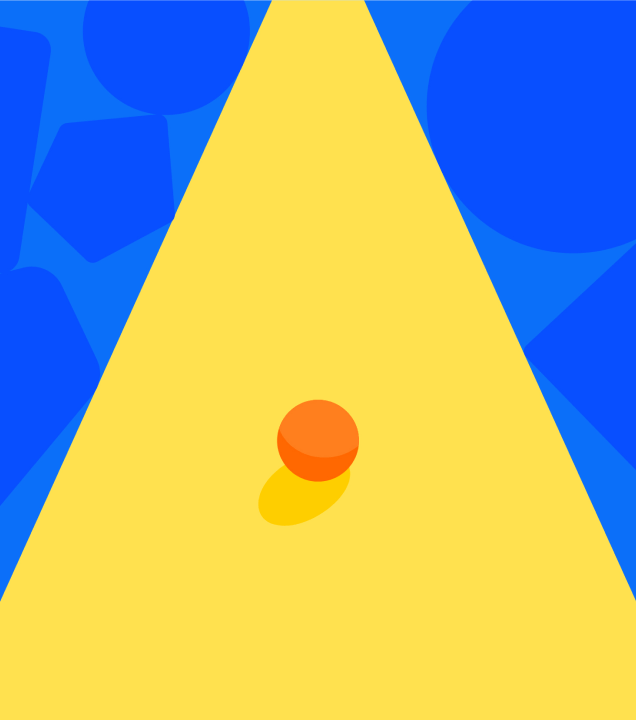CBT vs. DBT: Key differences to know
Researched and Written by Headspace Editorial Team
Jun 27, 2025
Your mental health journey is unique, even if you have similar reasons as someone else for seeking help. Whether you’re considering therapy to boost your mood, build resilience, or treat symptoms of a specific condition, finding the right treatment is a crucial part of your recovery and healing. Among the different types of therapy available, evidence-based therapies, such as cognitive behavioral therapy (CBT) and dialectical behavior therapy (DBT), can significantly improve your life, but no single approach works for everyone. Even though they're both effective and share some similarities, CBT and DBT are designed to meet very different needs and challenges.
Both cognitive behavioral therapy and dialectical behavior therapy are available through Headspace’s online care platform, which strives to make professional mental health care accessible, convenient, and affordable. Read on to learn more about the similarities and differences between CBT vs. DBT so you can discover which might be a better fit for your needs and goals.
What is cognitive behavioral therapy (CBT)?
Cognitive behavioral therapy is a structured, goal-oriented form of talk therapy, also known as psychotherapy. It teaches you to identify unhelpful thought and behavior patterns so you can make changes. According to the American Psychological Association (APA), CBT is an excellent treatment option if you’re dealing with conditions like anxiety, depression, phobias, and concerns such as disordered eating or substance abuse problems.
CBT is widely considered the gold standard treatment of psychotherapy. It often involves homework that encourages you to apply skills between sessions. You might have assignments like journaling, tracking your thoughts or emotions, or practicing new coping skills.
What is dialectical behavior therapy (DBT)?
Dialectical behavior therapy is an adaptation of CBT. It was originally developed to help with managing intense emotions and self-destructive behaviors, which are common symptoms of borderline personality disorder (BPD). Today, it’s used when treating other conditions, such as substance use disorders, bipolar, and major depressive disorder.
DBT differs from other forms of therapy because it’s structured around four core skills that are embedded into its process:
- Mindfulness: The practice of staying in the moment and being aware of your thoughts, feelings, and emotions without judgment.
- Distress tolerance: Learning tools to manage crises and pain without allowing them to take over.
- Interpersonal effectiveness: Navigating relationships by setting boundaries and communicating in healthy, effective ways.
- Emotional regulation: Identifying and managing intense emotions in healthy ways.
One major difference between DBT and other types of therapy is that DBT uses a combined approach: group skills training, traditional individual therapy format, and phone coaching support between sessions. This offers personalized individual support and provides you with the opportunity to practice coping skills in a group setting.
Key similarities between CBT and DBT
There are several similarities between DBT and CBT. For example, both are evidence-based, which means they’re supported by large bodies of evidence and scientific research. They’re also goal-oriented. Finally, both focus on developing and enhancing coping skills and are relatively short-term compared to traditional psychotherapy.
Whether you choose CBT or DBT, both approaches are taught by licensed therapists specifically trained in these therapeutic modalities.
Major differences between CBT and DBT
To better understand the differences between CBT vs. DBT, it can be helpful to examine them side by side.
| Feature | Cognitive Behavioral Therapy | Dialectical Behavior Therapy |
|---|---|---|
| Primary focus | Identifying and changing unhealthy or unhelpful thought and behavior patterns | Learning to manage emotional dysregulation and handle interpersonal conflict in healthy ways |
| Core skills learned |
|
|
| Session format | Primarily one-on-one private therapy sessions | Individual sessions, group skills training, phone coaching |
| Length of treatment | Short-term: 5–20 sessions | Longer-term: 6–12 months |
| Use cases |
|
|
| Philosophy | Strong focus on change and self-improvement | Balanced focus on acceptance and change |
| Homework |
|
|
Which therapy is right for you?
While there’s no rule on which approach to therapy will be most effective for you, general guidance can help you narrow your search. For example, CBT is an excellent strategy if you’re struggling with negative thinking, avoidance, or identified fears. DBT might be a better option if you have difficulty managing extreme, intense emotions, have frequent interpersonal conflicts, or engage in self-destructive patterns.
Ultimately, deciding between DBT vs. CBT depends on your symptoms, condition, and goals for treatment. Consider the following to help you decide:
- Primary symptoms: Negative thought patterns, avoidance, and low motivation can be treated with CBT. Overwhelming emotions, impulsive behavior, and unstable relationships can benefit from DBT.
- Diagnosis: CBT is a common form of therapy for treating conditions like generalized anxiety disorder (GAD), major depressive disorder (MDD), OCD, and a range of phobias. DBT was initially developed to treat borderline personality disorder (BPD) but is now widely used for mood disorders, PTSD, and substance use disorder as well.
- Treatment goals: If your goal for therapy is to learn coping skills and change your thought and behavior patterns, CBT is a good choice. On the other hand, if you want to focus on emotional stability, self-acceptance, and better relationships, DBT can be an ideal form of treatment.
If you can’t decide or are unsure, talking to a licensed therapist is a great way to find the best match for your individual needs. Therapists are trained and skilled at identifying your specific situation and assessing what form of therapy is most likely to offer the best results. A personalized treatment plan is key to your success, and the right type of therapist will be instrumental in helping you.
Start your therapy journey with Headspace
Ready to take the next step on your mental health journey? Online therapy from Headspace makes it easy. We connect you to licensed therapists who are trained in CBT, DBT, and other evidence-based treatment modalities. Therapy from Headspace is convenient. It’s also affordable—we accept most types of insurance. Our goal is to ensure that mental healthcare is tailored to your individual mental health goals.
If you’re looking for emotional regulation support, coping tools to help you manage symptoms of depression or anxiety, or expert guidance through life’s challenges, we’re here for you. Headspace is effective, too. Over 70% of members feel less anxious or depressed after just a few weeks of therapy.1
You don’t have to do this alone. Explore therapy from Headspace today to start on your path toward emotional well-being.
1. Based on follow-up assessments completed 6–16 weeks after starting care. Therapist rating reflects average post-session feedback from Headspace Therapy members.
Sources:
What is Cognitive Behavioral Therapy? (2015). American Psychological Association. https://www.apa.org/ptsd-guideline/patients-and-families/cognitive-behavioral. Accessed May 27, 2025.
Dialectical Behavior Therapy (DBT). (2024, October 25). Yale Medicine. https://www.yalemedicine.org/conditions/dialectical-behavior-therapy-dbt. Accessed May 27, 2025.


Get our best price of the year for a limited time
- Access the full library of 500+ meditations on everything from stress, to resilience, to compassion
- Put your mind to bed with sleep sounds, music, and wind-down exercises
- Make mindfulness a part of your daily routine with tension-releasing workouts, relaxing yoga, Focus music playlists, and more
50% off your first year, then subscription will renew at full price.


Stay in the loop
Be the first to get updates on our latest content, special offers, and new features.
By signing up, you’re agreeing to receive marketing emails from Headspace. You can unsubscribe at any time. For more details, check out our Privacy Policy.
- © 2025 Headspace Inc.
- Terms & conditions
- Privacy policy
- Consumer Health Data
- Your privacy choices
- CA Privacy Notice







